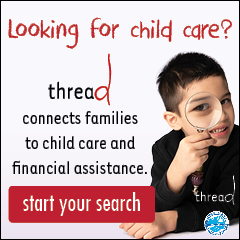Know when to go
Expert advice on when to take your sick baby to the doctor
By Malia Jacobson

Does your little one have the sniffles, or something more serious? Now more than ever, you may be wondering when to take your fussy, under-the-weather baby to the doctor. Per the American Academy of Pediatrics, babies catch up to 10 colds per year, more if they have older siblings or attend daycare. Since each illness may result in two to three weeks of symptoms, a baby may be sick up to 140 days out of their first year of life.
Because babies are still building critical immune-supporting antibodies, they lack protection against viruses and bacterial illnesses that circulate during cold and flu season. But not every sniffle or sneeze warrants a doctor visit – and going in for unneeded office visits may expose your baby to more harmful germs or spread them to others. When you’re considering a doctor visit for your baby, here’s how to know when to go.
Viral illnesses
Viral illnesses like influenza (a.k.a. the flu) are more common during the winter and spring months but can happen at any time. “For viral infections, we treat symptoms, but because the illness is viral and not bacterial, antibiotics are not needed,” says family physician Frida Pena, MD.
RSV and Bronchiolitis
Respiratory syncytial virus (or RSV) is a common respiratory illness that can progress into a lung infection called bronchiolitis. RSV usually begins like a regular cold, with a stuffy or runny nose, mild cough, fever (temperature higher than 100.4), and decreased appetite. As the illness progresses, children may breathe rapidly or have trouble breathing, wheeze or make a whistling sound when breathing, or have a severe cough.
When to go: Many children with RSV or bronchiolitis do not need to see a doctor. But parents should watch for some important symptoms, says Frida. Call your healthcare provider if:
- You can see indentations between or below your baby’s ribs when they breathe.
- Your baby's nostrils flare (get bigger) when they breathe.
- Your baby younger than 3 months has a fever (temperature greater than 100.4).
- Your baby older than 3 months has a fever (temperature greater than 100.4) for more than 3 days
- Your baby has fewer wet diapers than normal.
Fifth Disease (Erythema Infectiosum)
Erythema infectiosum, or fifth disease, is a common, contagious illness with mild symptoms that include fever, headache, sore throat, cough, diarrhea, vomiting, and muscle aches that last for 2-5 days. After these symptoms fade, children may develop a lacy, bright pink “slapped cheek” across the face, arms and upper back along with joint pain.
When to go: Most children feel better within a week and don’t require a doctor visit. See your pediatrician or healthcare provider in the following situations:
- Your baby has an immune or blood disorder and has symptoms of fifth disease.
- Your baby has symptoms for more than a month.
- You develop fifth disease during pregnancy. Rarely, fifth disease can be dangerous for an unborn baby.
Hand, Foot and Mouth Disease
Hand, Foot, and Mouth Disease (HFM) is a common babyhood illness that causes painful sores to form in the mouth and on the hands, feet, buttocks and sometimes genitals. The condition is uncomfortable
but usually short-lived – symptoms fade within a week or so.
When to go: It’s best to keep kids with HFM at home to avoid spreading this highly contagious illness, says Frida. Call your pediatrician if:
- Your baby is drinking less than usual and hasn’t had a wet diaper for 4-6 hours.
- The condition isn’t improving after several days or symptoms seem to be getting worse.
Croup
Croup is a term for a group of infections that affect the trachea (main airway through which we breathe), causing a distinctive cough that sounds like a seal barking. Croup infections are most common between 6 months and 3 years of age and less common after age 6.
When to go: In most children, croup goes away on its own. In some cases, croup warrants a doctor visit or even immediate medical attention in an emergency department.
Call 911 if:
- Your baby starts to turn blue or pale.
- Your baby is breathing with extreme difficulty.
- Your baby can’t speak or cry because he can’t get enough air.
- Your baby is very upset, very sleepy or doesn’t seem to respond to you.
Call your baby’s pediatrician if:
- Your baby’s cough won’t go away.
- Your baby starts to drool or can’t swallow.
- Your baby makes a noisy, high-pitched sound when breathing, even while just sitting or resting.
- You see indentations between or under your baby’s ribs when breathing.
- Your baby younger than 3 months has a fever (temperature greater than 100.4).
“All these diseases can be prevented by washing your hands and your baby’s hands often with soap and water, or using alcohol-based hand sanitizers for older children, staying away from adults and children who are sick, and making sure your baby gets all the recommended vaccines, including the flu shot,” says Frida. While you’re at it, get a flu shot yourself, too.
Bacterial infections
Many common babyhood illnesses, from strep throat to whooping cough, are caused by bacteria. “For bacterial infections, recommendations in terms of how to prevent them are the same as for viral infections,” says Frida. The main difference between these illnesses and viral infections: Bacterial illnesses require either oral or topical treatment, and an office visit is usually required.
Strep throat
About 3 in 10 sore throats are strep throat, caused by streptococcal bacteria. Strep throat causes severe throat pain, fever, and swollen glands in the neck. Strep throat is less common in babies than in older children; babies with strep throat may be extra fussy or disinterested in eating.
When to go: If you suspect strep throat, contact your baby’s healthcare provider, since this bacterial infection requires treatment. Additionally, contact your baby’s doctor if:
- Your baby has a fever of at least 101.
- Your baby doesn’t want to eat or drink anything.
Call 911 if your baby has trouble breathing or swallowing, is drooling much more than usual or has a stiff of swollen neck.
Scarlet Fever
The same bacteria that cause strep throat can also cause scarlet fever, a condition that causes a red rash. Children with scarlet fever usually have a sore throat along with a spotty, red, sandpaper-like rash on the head and neck that spreads to the body, arms and legs. Your baby’s tongue may appear bright red with white spots.
When to go: Scarlet fever is treated with antibiotics, so it’s important to call your baby’s healthcare provider if your baby has a sore throat accompanied by a rash. As with strep throat, seek medical attention if:
- Your baby has a fever of at least 101.
- Your baby doesn’t want to eat or drink anything.
Call 911 if your baby has trouble breathing or swallowing, is drooling much more than usual or has a still or swollen neck.
Impetigo
When bacteria get into cuts and scrapes, a skin infection called impetigo can cause red, painful bumps on the skin, usually on the face, arms, or legs. These bumps go on to form blisters before scabbing over; scabs are often yellow, gold, or brown.
When to go: Call your baby’s doctor if you suspect impetigo; the condition requires treatment with antibiotics to avoid spreading the illness to others. More reasons to call your baby’s doctor:
- Sores continue to spread after beginning antibiotic treatment.
- Sores don’t begin to improve 24 hours after beginning treatment.
Whooping Cough
Also called pertussis, whooping cough is an infection that causes a severe cough that can last for weeks and months. The distinctive “whoop” sound occurs when someone tries to breathe after a coughing attack, but not everyone with whooping cough will make the sound, says Frida. Symptoms include sneezing, runny nose, and a cough that lingers and gets worse after other symptoms resolve. This illness is preventable through vaccination; children should get 5 doses of the whooping cough vaccine by age 6.
When to go: Whooping cough requires treatment with antibiotics for the person with the illness as well as family members, even if they’re not sick. After your baby begins antibiotic treatment, watch for the following signs that may require another doctor visit:
- Your baby develops a fever.
- Your baby vomits repeatedly from coughing.
- Your baby loses interest in eating or drinking.
- Your baby appears dehydrated with fewer than 4-6 wet diapers in 24 hours.
If you still have questions about when to go, pick up the phone. Caregivers should always call their baby’s healthcare provider any time they have questions or concerns about their baby’s health, says Frida. Here’s to a healthier first year with fewer sick days – for the entire family.










